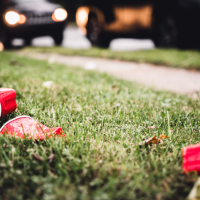Marijuana use is a major problem in today’s youth. Since marijuana use can have long-lasting effects on young people’s health, schools should address social norms and perceptions that marijuana is harmless, while promoting refusal skills.
Marijuana Use Statistics for Teens
-
43.7 percent of twelfth-graders have used marijuana. This means by the time they leave high school, almost half of all teens have experimented with marijuana. 1
-
22.1% of 12th graders have vaped marijuana in the past year. 2
- 6.9% of 12th graders vape marijuana daily. 2
- People who start using marijuana before the age of 18 are 4-7 times more likely than adults to develop marijuana use disorder. 4
Changes in Perceived Risk
According to SAMHSA’s 2019 National Survey on Drug Use and Health, teens increasingly believe that marijuana doesn’t pose great risks. The rate of adolescents aged 12 to 17 who perceived great risk of harm from smoking marijuana weekly declined from 40.6 percent in 2015 to 34.6 percent in 2019.
However, since marijuana can cause adverse effects like marijuana use disorder, it’s necessary to educate students on the risks and harms of marijuana. THC levels in marijuana have been increasing since the 80s, meaning a greater risk of a harmful reaction.
Harmful Effects of Marijuana
Effects on the Brain
- Marijuana can cause changes in mood and problems thinking or problem-solving.
- Marijuana use affects brain development in teens, reducing attention, memory, and learning functions.
- Effects can be long-term or permanent.
Physical and Mental Effects
- Physical effects can include breathing problems
- Mental problems can include paranoia, depression, anxiety, and sometimes temporary psychosis.
Links to School Problems
- Marijuana use can cause problems with attention, memory, and learning which can interfere with a student’s ability to focus.
- Students who use marijuana are more likely to get lower grades and are more likely to drop out than peers that don’t use.4
Impaired Driving
- Marijuana is the most common illegal drug involved in fatal car accidents.
- Marijuana affects alertness, concentration, and reaction time, which can lead to car accidents.
- More than 9% of drivers ages 16-20 admit to having driven under the influence of marijuana.
How to Prevent Teen Marijuana Use
Schools can use a variety of practices to prevent teen marijuana use. For example, the Department of Human Services in the State of Illinois recommends the following practices to prevent teen marijuana use:
- Education programs for youth that clearly explain the risks and harm associated with marijuana use and emphasize refusal skills
- Media campaigns that also explain these risks and harm
- Encourage teens to avoid marijuana use during their teenage years so that their brains can develop normally
- Encourage parents to set expectations for marijuana use for their children, to monitor their behavior, and to provide appropriate discipline when the expectations are broken
Research from NaturalHigh.org indicates that one of the best ways to prevent teen drug abuse is actually to help them to find their true passion. In this way, teens can substitute drug-induced highs for “natural highs.” Natural highs can come from things like sports, music, film, acting, martial arts, etc.
Marijuana Prevention and Intervention for Your School
Preventing marijuana use is critical for helping a higher percentage of teens to develop normally from a physical, social, and psychological standpoint.
To combat teen marijuana use, offer:
- Marijuana-Wise – a marijuana awareness course
- Marijuana 101 – a marijuana intervention course
Both of these courses can help students at your school to learn about the dangers of marijuana use and give them strategies for avoiding it.
Get in touch with us today if you want to learn more about these courses on your campus.
References
-
“Marijuana.” National Institute on Drug Abuse. https://teens.drugabuse.gov/drug-facts/marijuana#topic-7
-
“2020 Monitoring the Future Survey Results.” National Institute of Drug Abuse. https://www.drugabuse.gov/drug-topics/related-topics/trends-statistics/infographics/monitoring-future-2020-survey-results
-
3. “Key Substance Use and Mental Health Indicators in the United States: Results from the 2019 National Survey on Drug Use and Health.” SAMHSA. https://www.samhsa.gov/data/sites/default/files/reports/rpt29393/2019NSDUHFFRPDFWHTML/2019NSDUHFFR1PDFW090120.pdf “Marijuana and Public Health.” Centers for Disease Control. https://www.cdc.gov/marijuana/health-effects.html
-
“Marijuana Facts for Teens.” DrugAbuse.Gov. https://www.drugabuse.gov/publications/marijuana-facts-teens/some-things-to-think-about
-
“Steer teens away from using marijuana, driving under influence.” American Academy of Pediatrics.” https://www.aappublications.org/news/2020/01/24/parentplus012420
-
“Marijuana Prevention Strategies Resource Guide.” Department of Human Services State of Illinois – http://www.dhs.state.il.us/OneNetLibrary/27896/documents/Cannabis_Prevention_Strategies.pdf
-
Naturalhigh.org. https://www.naturalhigh.org/our-approach/?utm_source=Google&utm_medium=PPC&utm_campaign=Awareness&gclid=CjwKCAiAsOmABhAwEiwAEBR0ZspccUgtboA5Ne0Y2FwTEMY_-itqOcaikE98LyMQ5dHdBtYcdqRi7hoCFx0QAvD_BwE




